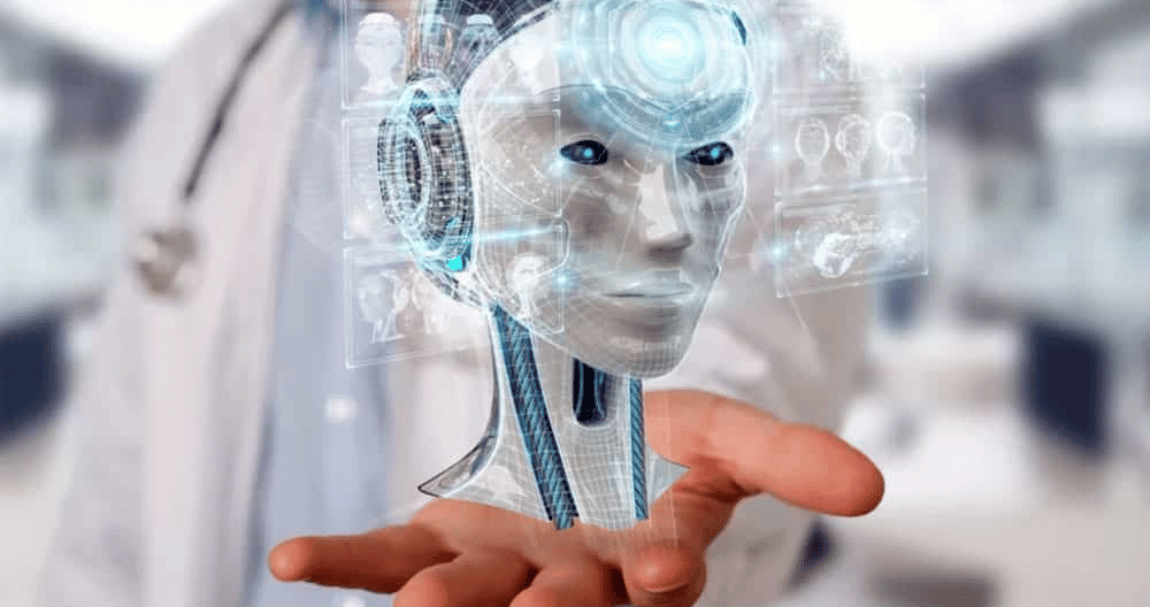Welcome to our blog on Artificial Intelligence in Radiology! In this blog, we’ll explore the exciting possibilities of Artificial Intelligence (AI) in radiology and how it transforms how we diagnose and treat medical conditions. We’ll talk about the advantages, difficulties, applications, potential, and ethical issues associated with AI in radiology so that you may keep updated about the most recent developments in the industry. So, let’s dive in and explore the power of AI in radiology!
Benefits of Artificial Intelligence in Radiology

Artificial Intelligence (AI) in radiology transforms how medical professionals diagnose and treat patients. AI has the potential to significantly increase radiological diagnosis accuracy and precision, leading to better patient outcomes and lower costs. Here are some of the key benefits of AI in radiology:
Increased Accuracy and Precision: Medical photos may include patterns complex for humans to see, but AI systems can swiftly and reliably identify them. This might result in a more precise diagnosis, improving patient outcomes.
Improved Patient Outcomes: AI can help detect cancerous lesions and other abnormalities earlier, leading to better treatment options and patient outcomes. Improved patient outcomes may result from using AI to lessen the possibility of false positives and negatives.
Reduced Costs: By eliminating the need for human work and extra testing, AI may help lower the cost of medical imaging. AI can also reduce the cost of radiology by reducing the need for expensive equipment.
More Efficient Workflow: AI can help streamline the workflow in a radiology department by automating specific tasks. Patient wait times may be shortened, and medical staff may have more time to concentrate on crucial responsibilities.
Artificial Intelligence in radiology can significantly improve the accuracy and precision of radiological diagnoses, resulting in improved patient outcomes and reduced costs. AI can also help streamline the workflow in a radiology department, allowing medical professionals to focus on more critical tasks and reducing patient wait times.
Challenges of Artificial Intelligence in Radiology
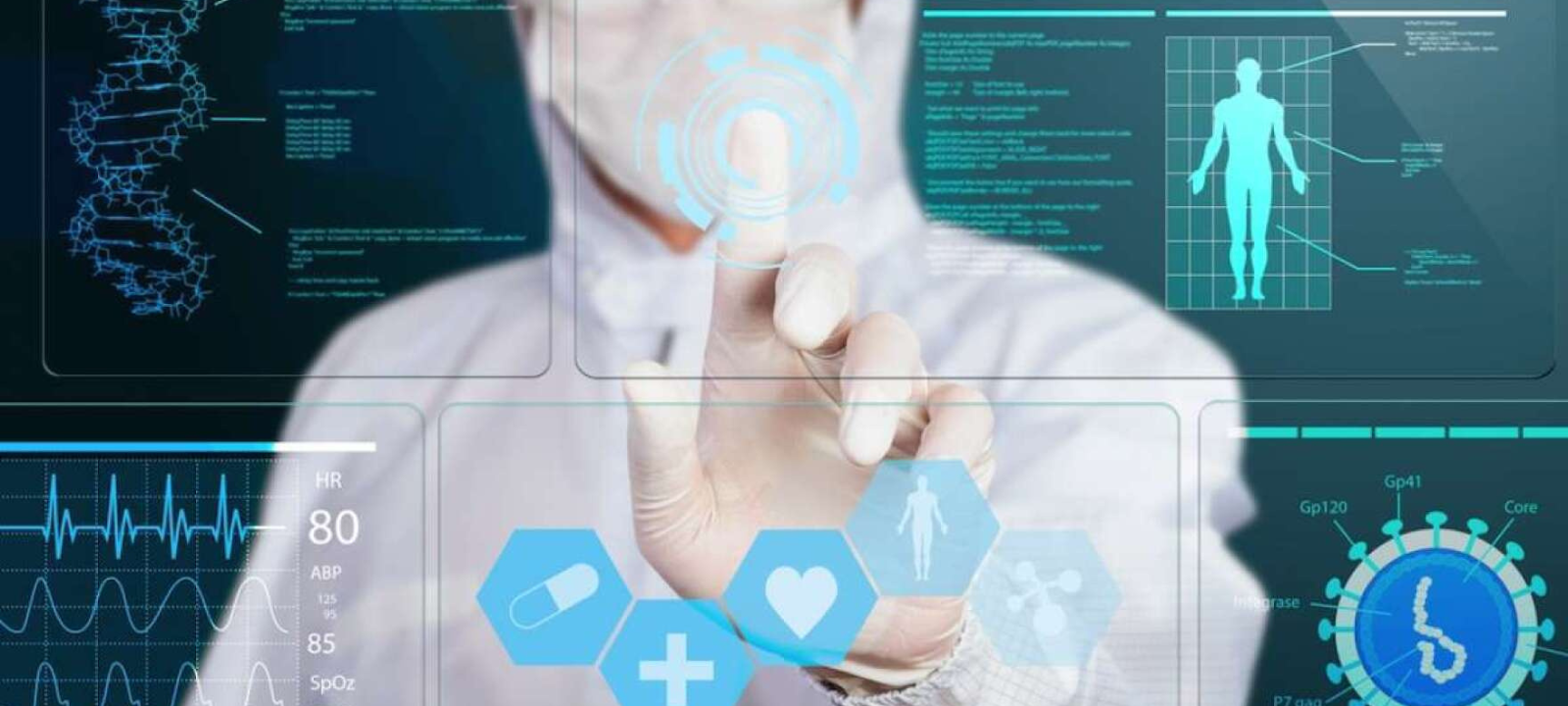
The use of artificial intelligence (AI) within the field of radiology has significant promise in revolutionizing the diagnostic and treatment processes for patients via the application of medical imaging. However, many challenges must be addressed before AI can become a reliable and accepted tool in the medical community. In this chapter, we will explore the system complexity, data privacy, interpretation of results, and lack of standardization, which are some of the challenges of using AI in radiology.
System Complexity:
AI systems are complex and require much computing power to run. Because of its complexity, it may be challenging to comprehend how the system operates and how modifications to the data it processes may influence it. Additionally, the data to train AI systems must be accurate and complete, as errors or omissions can lead to unreliable results.
Data Privacy:
Data security is a significant challenge when using AI in radiography. Medical imaging data must be secured to ensure patient privacy since it is vulnerable. Additionally, AI systems must be able to comply with existing laws and regulations regarding data privacy and security.
Interpretation of Results:
The data that AI systems are taught determines how trustworthy they are. Therefore, ensuring that AI-based diagnoses’ results are interpreted correctly is essential. This can be not easy, as AI systems sometimes must clearly explain their results.
Lack of Standardization:
The use of AI in radiology is still in its infancy, and there needs to be more standardization in how AI systems are designed and used. This can lead to consistency in results and make comparing results from different AI systems difficult.
Before AI to be considered a reliable and popular tool in the medical field, several challenges must be overcome. But AI has the potential to change the way medical imaging is used to diagnose and treat patients with the appropriate approach and investment.
Examples of Artificial Intelligence in Radiology
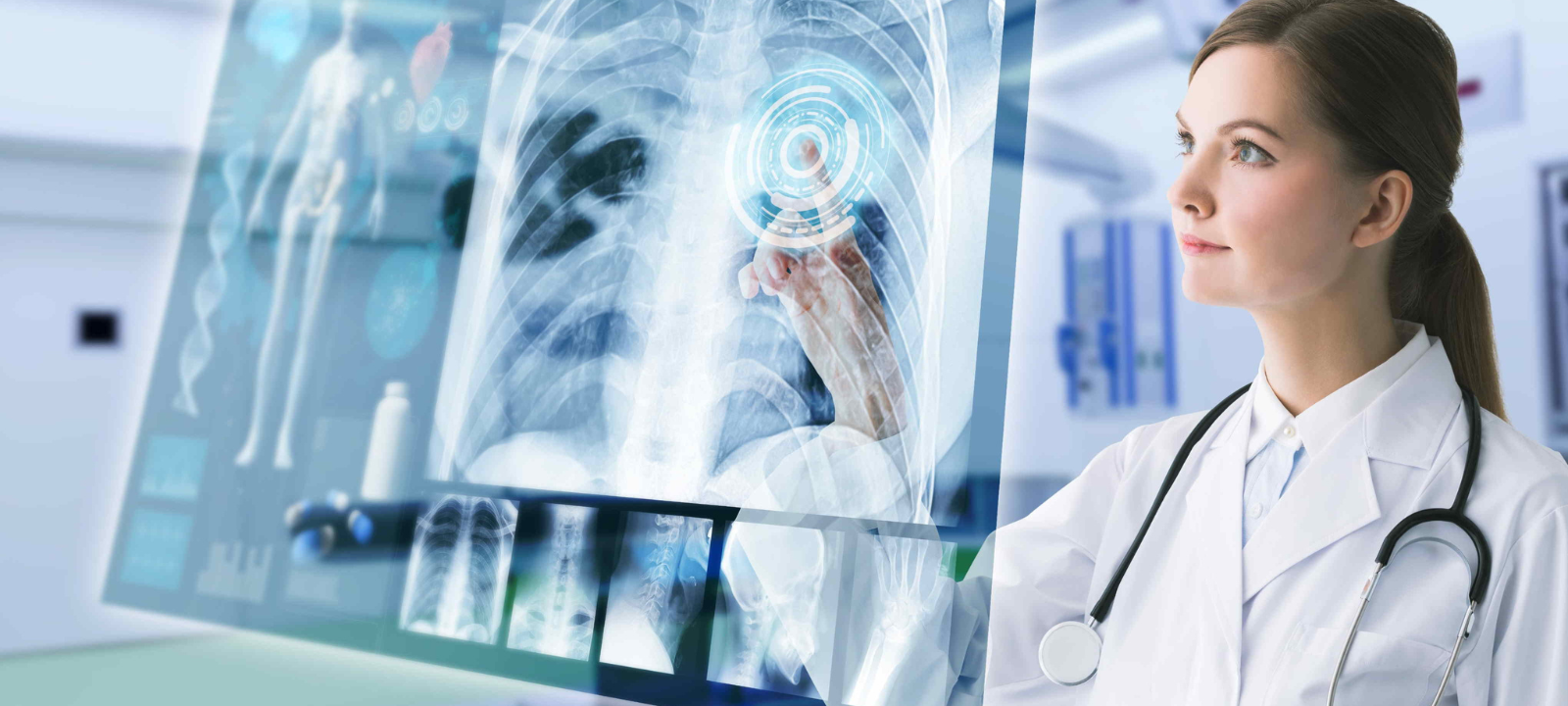
Artificial intelligence (AI) is used in radiology to revolutionize disease diagnosis and treatment. AI automates complex tasks, such as detecting fractures, tumors, stroke, and pulmonary embolism. Here are some examples of how AI is being used in radiology today:
Automated Detection of Fractures: AI algorithms detect fractures on X-rays and CT scans. These algorithms can quickly and accurately detect fractures, even in cases where the fracture is not visible to the human eye. This allows medical professionals to quickly diagnose and treat fractures, reducing the risk of further injury.
Automated Detection of Tumors: AI algorithms detect tumors in MRI scans. These algorithms can accurately detect tumors, even in cases where the tumor is not visible to the human eye. This allows medical professionals to quickly diagnose and treat tumors, reducing the risk of further complications.
Automated Detection of Stroke: AI algorithms detect strokes on MRI scans. These algorithms can quickly and accurately detect strokes, even in cases where the stroke is not visible to the human eye. This allows medical professionals to quickly diagnose and treat strokes, reducing the risk of further complications.
Automated Detection of Pulmonary Embolism: AI algorithms detect pulmonary embolism on CT scans. These algorithms can quickly and accurately detect pulmonary embolism, even in cases where the embolism is not visible to the human eye. This allows medical professionals to quickly diagnose and treat pulmonary embolism, reducing the risk of further complications.
The application of AI in radiography is revolutionizing how doctors identify and treat illnesses. AI algorithms allow medical professionals to detect fractures, tumors, strokes, and pulmonary embolisms quickly and accurately, reducing the risk of further complications.
The Future of Artificial Intelligence in Radiology
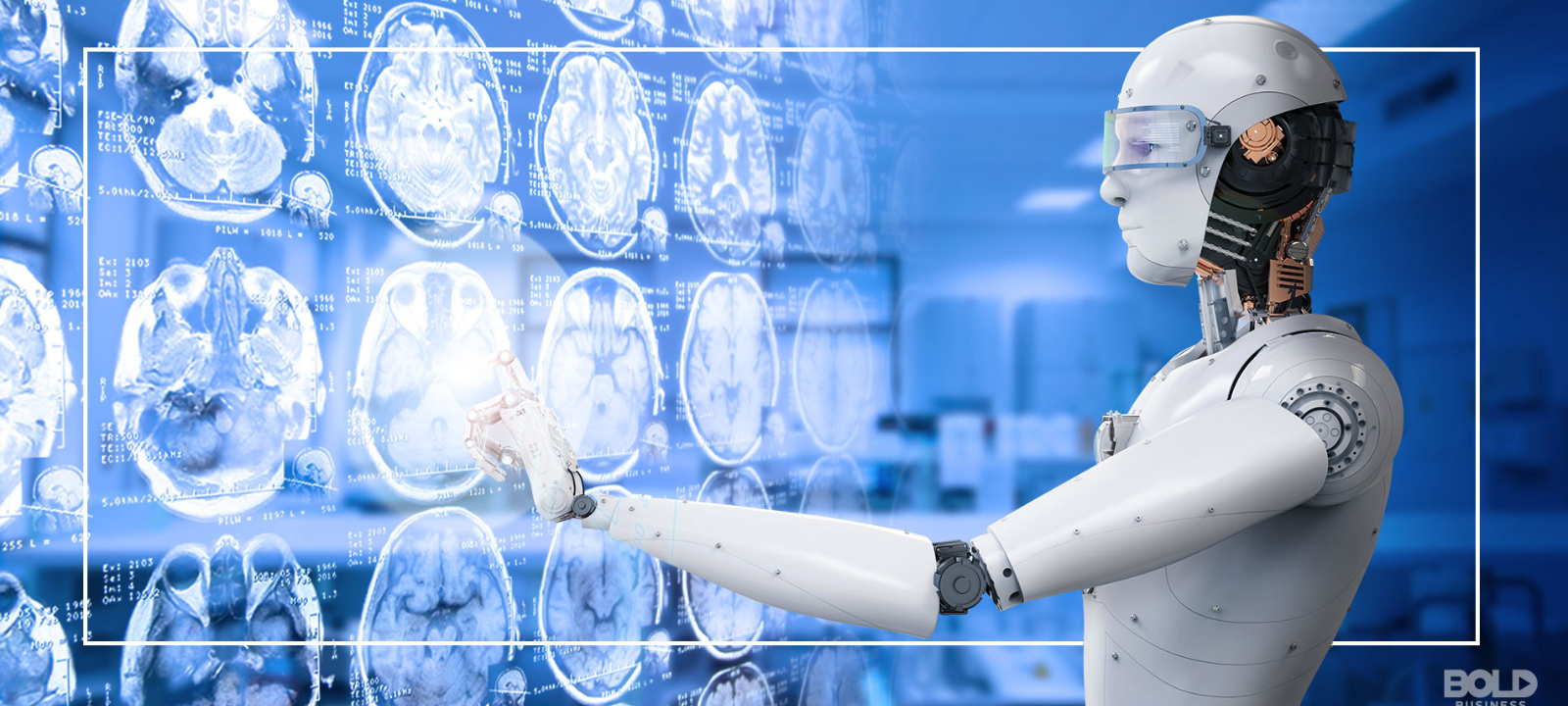
The future of Artificial Intelligence (AI) in radiology is incredibly bright. AI has the potential to revolutionize the way we diagnose and treat diseases, ultimately leading to better patient outcomes. AI has already started to impact radiology with improved accuracy, automation of more complex tasks, more efficient workflow, and increased patient access.
AI-driven technologies can improve the accuracy of radiology scans and diagnoses. AI systems can be trained to detect subtle changes in images that may not be visible to the human eye. AI may also be used to speed up and increase the accuracy of diagnosis by automating more challenging activities like picture segmentation. AI can also help to streamline workflow by automating routine tasks, such as image processing and data entry.
Finally, AI can help to increase patient access by enabling remote diagnosis and treatment. The future of AI in radiology will likely include more sophisticated applications, such as AI-driven decision support systems that can help guide radiologists in their diagnoses. AI may also be used to create illness prediction and prognosis models that are more accurate, which can enhance patient outcomes.
When using AI in radiography, there are ethical issues that must be taken into account. AI systems must be built appropriately to prevent prejudice against certain patient groups and guarantee they are utilized responsibly and ethically.
The future of AI in radiology is inspiring, and the potential benefits of AI-driven technologies are immense. AI has the potential to transform how we identify and treat illnesses, which would eventually improve patient outcomes if ethical issues are carefully taken into account.
Ethical Considerations of Artificial Intelligence in Radiology

As more and more medical professionals turn to artificial Intelligence (AI) to help with diagnostic imaging, there are some important ethical considerations to remember. The way radiologists diagnose and treat patients may be revolutionized by AI technology. To ensure the technology is utilized safely and responsibly, several ethical problems still need to be resolved. In this chapter, we will discuss data privacy, quality assurance, responsibility for errors, access to healthcare, and cost considerations related to the ethical use of AI in radiology.
Data Privacy:
Data privacy is an essential ethical consideration when it comes to the use of AI in radiology. Since AI systems are trained on vast datasets, ensuring that patient data is safe and only utilized for the intended diagnostic use is crucial. Additionally, it is essential to ensure that patient data is not shared with any third parties without the patient’s explicit consent.
Quality Assurance:
Quality assurance is also an essential ethical consideration when it comes to the use of AI in radiology. AI systems are only as good as the data they are trained on, so ensuring that the data used to train the system is of the highest quality is important. Additionally, it is essential to ensure that the system is regularly tested and updated to perform optimally.
Responsibility for Errors:
Another ethical consideration regarding the use of AI in radiology is who is responsible for any errors that may occur. As AI systems are imperfect, it is essential to ensure a clear understanding of who is responsible if an AI system makes a mistake.
Access to Healthcare:
Access to healthcare is an essential ethical consideration when it comes to the use of AI in radiology. AI systems can increase access to healthcare for those who may not have access to traditional medical care. However, it is crucial to prevent the use of AI systems to restrict access to healthcare or discriminate against certain racial or ethnic groups.
Cost Considerations:
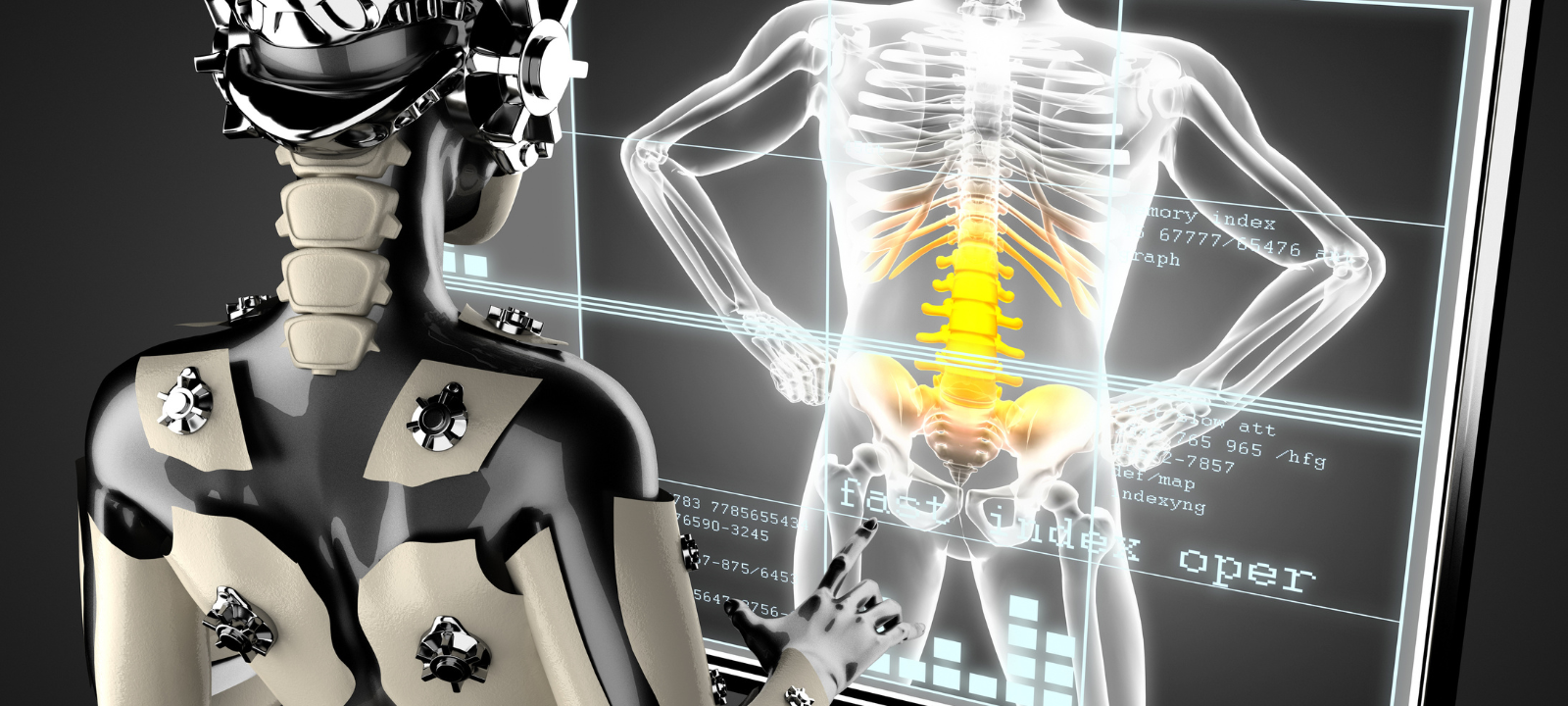
Finally, cost considerations are an essential ethical consideration when it comes to the use of AI in radiology. AI systems can lower healthcare costs, but ensuring patient care is not sacrificed for cost reduction is crucial. Additionally, it is essential to ensure that the cost of AI systems is affordable for those who cannot afford it.
In conclusion, several important ethical considerations must be considered when it comes to the use of AI in radiology. To ensure that AI technology is utilized safely and responsibly, it is crucial to address critical ethical issues such as data protection, quality assurance, accountability for mistakes, access to healthcare, and economic concerns.
Conclusion
The promise of artificial intelligence has yet to be fully realized, but it has already started to alter the area of radiology. AI can increase diagnostic accuracy and speed, lower imaging costs, and allow more individualized therapies. While there are still challenges to overcome, such as the need for more data and improved algorithms, the potential of AI in radiology is clear.
AI can also help to address ethical considerations, such as privacy and accuracy, by providing a more secure and reliable platform. As AI technology develops, it will become an increasingly important tool in radiology, transforming diagnostic processes and improving patient care.

